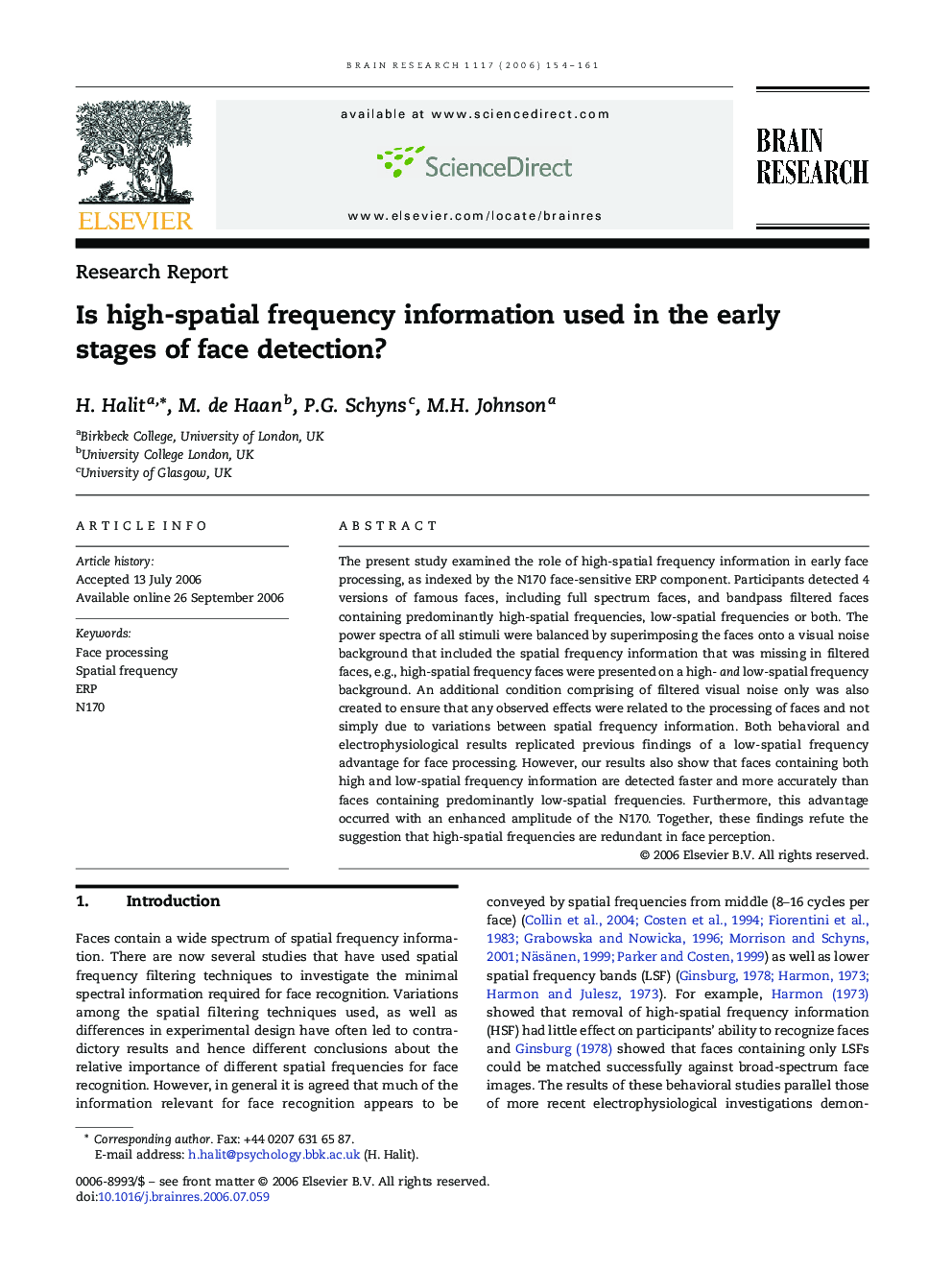| Article ID | Journal | Published Year | Pages | File Type |
|---|---|---|---|---|
| 4332174 | Brain Research | 2006 | 8 Pages |
The present study examined the role of high-spatial frequency information in early face processing, as indexed by the N170 face-sensitive ERP component. Participants detected 4 versions of famous faces, including full spectrum faces, and bandpass filtered faces containing predominantly high-spatial frequencies, low-spatial frequencies or both. The power spectra of all stimuli were balanced by superimposing the faces onto a visual noise background that included the spatial frequency information that was missing in filtered faces, e.g., high-spatial frequency faces were presented on a high- and low-spatial frequency background. An additional condition comprising of filtered visual noise only was also created to ensure that any observed effects were related to the processing of faces and not simply due to variations between spatial frequency information. Both behavioral and electrophysiological results replicated previous findings of a low-spatial frequency advantage for face processing. However, our results also show that faces containing both high and low-spatial frequency information are detected faster and more accurately than faces containing predominantly low-spatial frequencies. Furthermore, this advantage occurred with an enhanced amplitude of the N170. Together, these findings refute the suggestion that high-spatial frequencies are redundant in face perception.
